

Module 3: Flourish
It’s time to think like an engineer to make your microgreens flourish. You’ll need to use the ‘4 Ds’ of Design Thinking – Discover, Design, Develop and Deliver. These will help you become a creative STEM problem solver and make a grow house to control and improve your microgreens’ growing environment.
Unearthing the 4 Ds
We know that plants need light, water, and air to grow. But achieving the perfect balance of these things will help them flourish. To help you grow the ultimate crop and adapt your growing environment, we’ll follow a problem-solving process that engineers use to solve problems in a creative way.
The 4 Ds of Design Thinking:
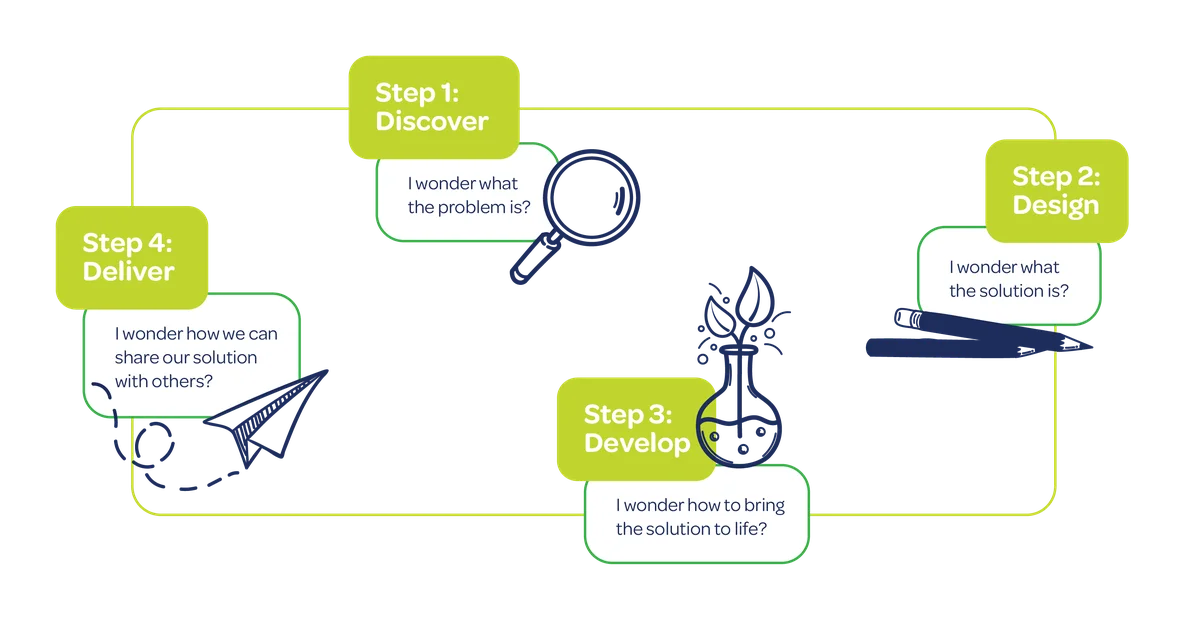
Engineers go back and forth between the steps until they find the best solution. This is called iterative thinking.
Let’s unpack the first D, discover.
Discover
The discovery stage is about defining the problem, and then exploring the best ways to tackle it.
The problem we’re tackling is: ‘I wonder how to grow food sustainably?’
Often, you can find inspiration from other STEM innovators who have found solutions to similar problems. Let’s discover together how innovators around the world are using technology to improve their crops and grow food in places we’ve never grown food before.
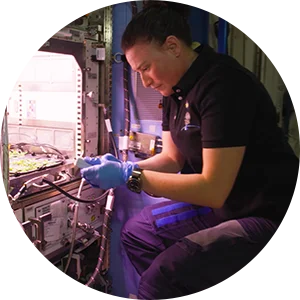
Build your grow house
Now you’ve seen you can grow microgreens whatever the weather, all year round! It doesn’t matter if you live in Antarctica or the Sahara Desert. But to ensure their speedy and consistent growth, you’ll need to create a controlled environment.
An easy way to do this is by building a grow house which provides protection, light and a constant temperature for growing plants.
There are heaps of benefits to using a grow house. Different plants thrive in different climates and weather conditions. So, by controlling the environmental conditions in a grow house, you can trick plants into growing all year round.
It also means you can garden in any weather, conserve energy sources (like water), your crops are protected from pests, and they don’t get blasted with bad weather.
Your rōpū is going to build a grow house for your first trial to help your microgreens thrive.

Lab 3.1: Build your grow house
Construct a basic grow house using recycled materials to help control the growing conditions of your first microgreen trial.
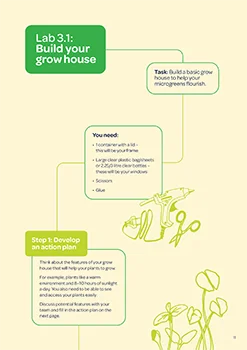
Time to move in
Your seedlings have now been germinating for around 3 – 7 days so let’s let the light in and transfer into your new grow house. Make some observations before and after you add your grow house – did your leaves change colour? Are the stems standing straighter? How quickly did your plants change?
Set up your second trial for success
Let’s grow
Hopefully by now your first microgreen trial has sprouted some tasty green morsels. But there’s always room for improvement. Is there a way to make your crop bigger and better?
Testing your growing method by running different trials is a great way to work out what will help your plants thrive. This will also help you work out the best way to grow a farm of the future!
Set up your second trial and make some changes to improve growth.
You’ll be collecting daily data for trial two just like you did for trial one. Go back to Lab 2.2 to record your findings.
Lab 3.2: Microgreen trial two
Let’s sow the seeds of microgreen trial two! See what improvements you can make this time to grow a more bountiful crop. Remember to name and label your grow trays.
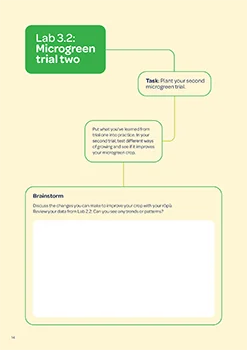
Nutrients
So far, your microgreens have been feeding off a mix of light, water and air to grow. You can boost this even further by adding a nutrient mix to your crop.
Lab 3.3: Making nutrients
Concoct a tasty mix of compost tea to boost the growth of your greens! Leave it to brew for a week. Bring in something to strain it with for the next module.
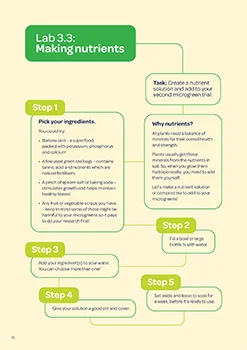
Reminder!
Be sure to keep an eye on your plants and water them at least once a day!
Continue to measure and record conditions for trial one and two in your lab book daily in Lab 2.2. You’ll need these to analyse your results.
If you’re not sure whether your plants are growing as expected, check them against the from seed to harvest poster.
Make sure you have enough recyclable materials for your second grow house in module four.
Checklist
Tools down! Today you:
- Started unpacking the 4 Ds of Design Thinking
- Built your first grow house
- Planted your second microgreen trial
- Brewed your compost nutrient solution